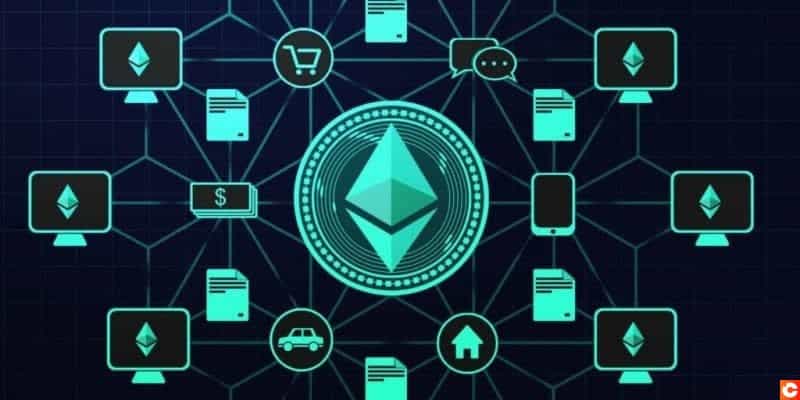What is a Decentralised Application (dApp)?
If you regularly keep up-to-date with cryptocurrency and blockchain technology, you may have come across the term ‘dApp’ or ‘decentralised application’. What is a decentralised application and more importantly, what does the ‘decentralised’ part mean?

Decentralised applications
A decentralised app (dApp) is essentially a system that has a user interface whose operation is based on certain criteria distributed between different players. Decentralisation can be defined by different criteria, but there are no specific rules or measures on which to judge it.
In accordance with the fundamentals of blockchain, the objective is to distribute the tasks linked to running an application, so that they are shared between the maximum number of separate nodes while guaranteeing an efficient running of the latter. Decentralisation, therefore, works on several different levels, which we will now look at together:
- Application architecture. Above all, on a technical level the application must be deployed on distributed networks to avoid total censorship and total control.
- Application development. If the entire architecture is decentralised, as for example on Ethereum, yet only a small team of individuals decides on its future, we are still far away from the standards of true decentralisation.
- Operation of the application. Moreover, if a lot of development was needed to integrate decentralised architecture during the development of the application, we must also pay attention to how it functions. Its users may have an influence and it would be necessary to limit restrictions as much as possible in order to allow as many people as possible to participate.
It is very complicated for an application to enter the world of decentralisation, since it very often goes hand in hand with losses in efficiency, ease of use and speed of development. For these reasons, an application is never completely decentralised and will naturally only further decentralise as it grows.
The architecture type of today’s dApp
There are already functional decentralised apps out there today within the user community. However, how do they work and how do you set up your own dApp? Luckily, it’s not rocket science, as an app is composed largely of two parts. One that performs the calculations ensuring the smooth operation of the app and the other the interface allowing users to easily use it.
Generally speaking, this is the first part to be decentralised and achieved through the use of smart contracts. These algorithms deployed on blockchains allow the application to function independently and ensure no one is able to modify them once implemented. However, interfaces are rarely decentralised, as anyone can develop their own one or create an app that combines different smart contracts from different projects.
With autonomous and open smart contracts, any user can analyse and really understand the internal operation of algorithms as well as the interfaces that can be set up individually to interact with some or all of these smart contracts. This makes it possible to develop ecosystems through a synergy of these players. What a far cry this is from the current opaque alternative offered by GAFAM.
The dangers of using decentralised apps
While dApps may seem to be a revolutionary alternative to the current centralised ones, we still must be particularly aware of the risk associated with their use.
In spite of the freedom decentralisation provides by allowing users to manage their data and sometimes their cryptocurrencies, it is still necessary to do your due diligence. Decentralised apps are based mainly on smart contracts with open and immutable codes. This means the issue of computer security should be a concern, as it is, still to this day, hard to guarantee a high level of security for most dApps.
Clearly these risks can be limited by the user, as well as through developer education and training. In fact, app security is very often a priority for project managers and there are various ways of achieving it, such as calling upon the community through various incentives like prizes or audits carried out by independent organisations.
That completes this presentation about dApps and how they work. If you have any comments or questions about this article, please let us know.
Maximize your Cointribune experience with our "Read to Earn" program! For every article you read, earn points and access exclusive rewards. Sign up now and start earning benefits.
Just your average global millennial embracing, and interested in, the future of money and finance. Excited by blockchain tech as well as fintech but have a special passion for DeFi and Yield Farming, what will this technological disruption bring next?
The views, thoughts, and opinions expressed in this article belong solely to the author, and should not be taken as investment advice. Do your own research before taking any investment decisions.